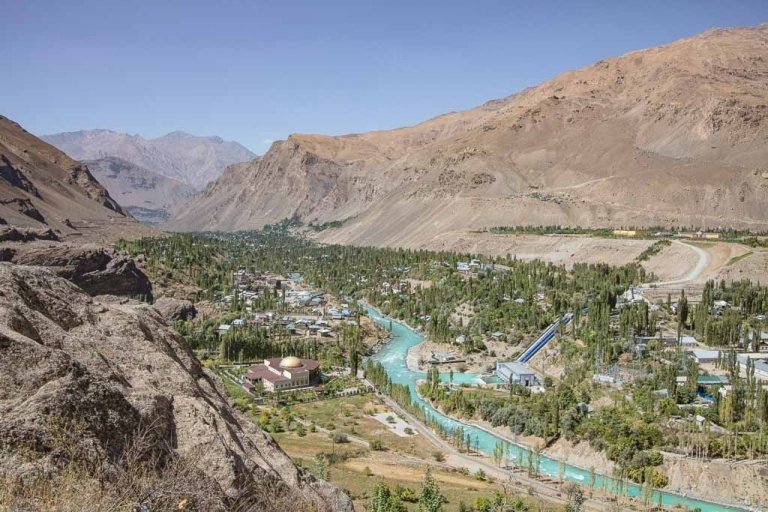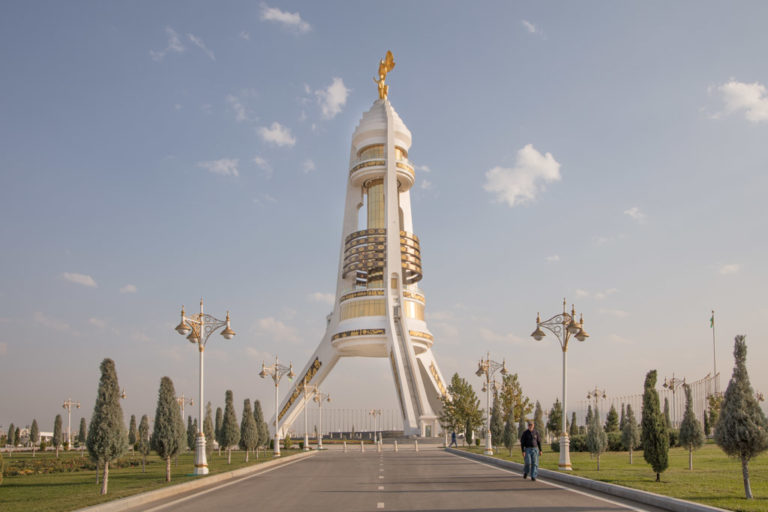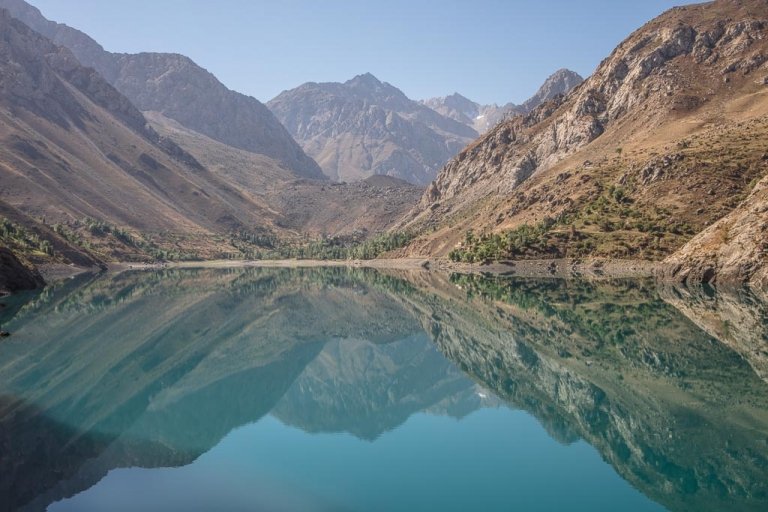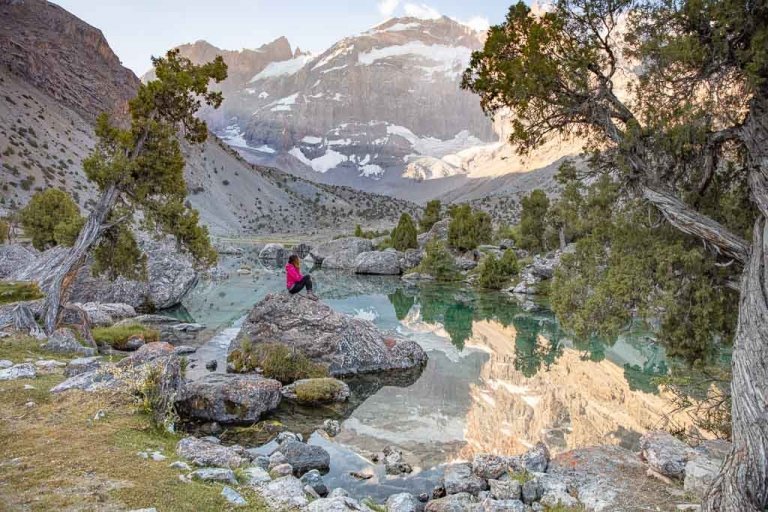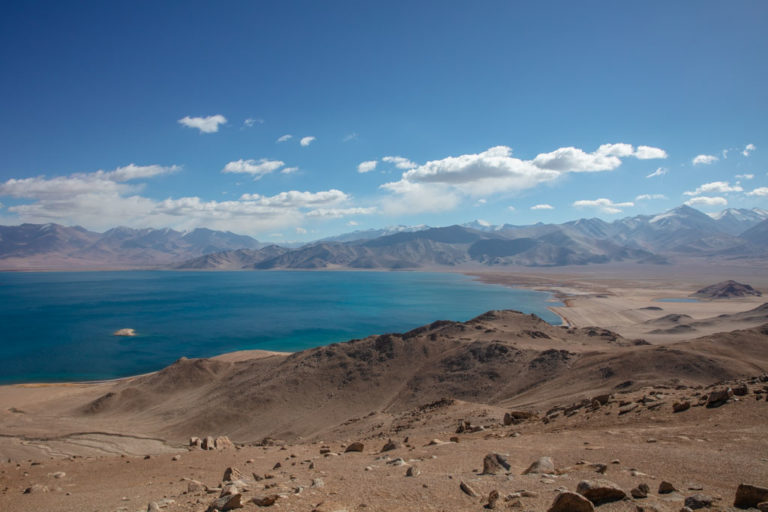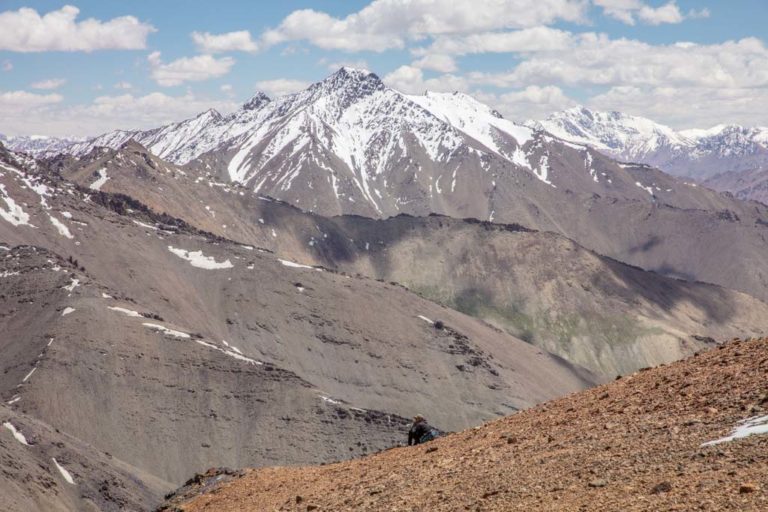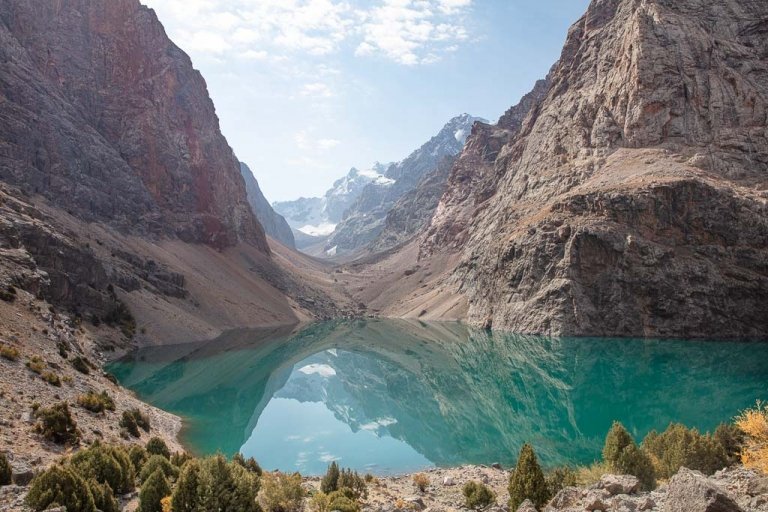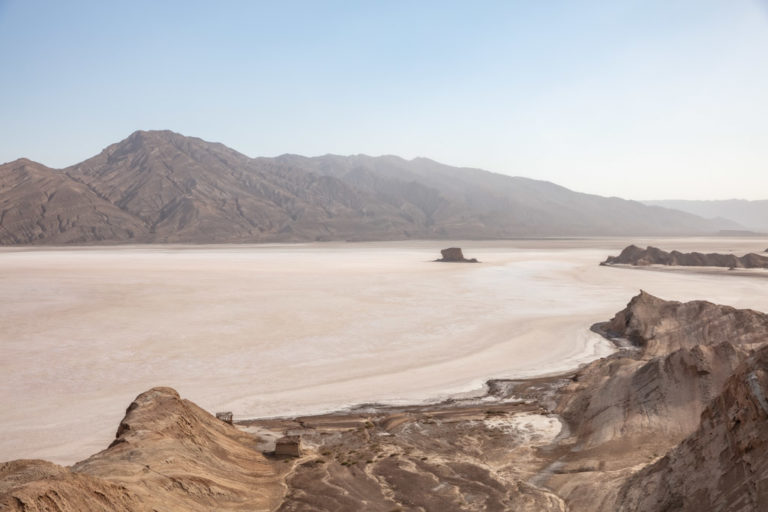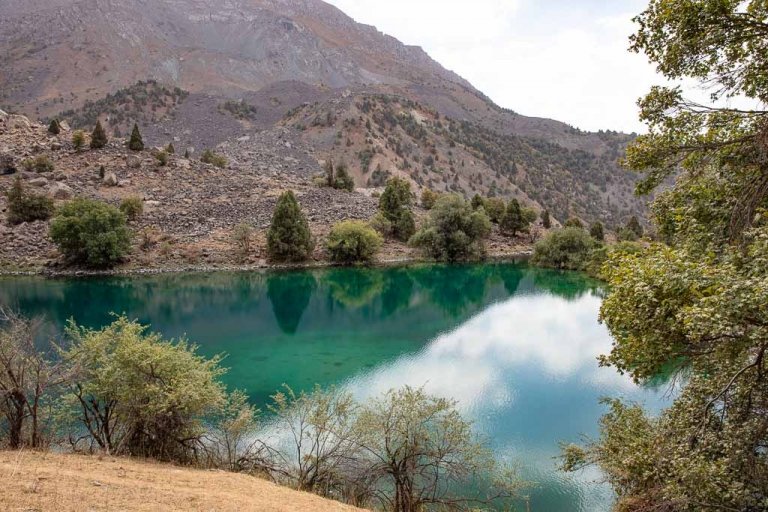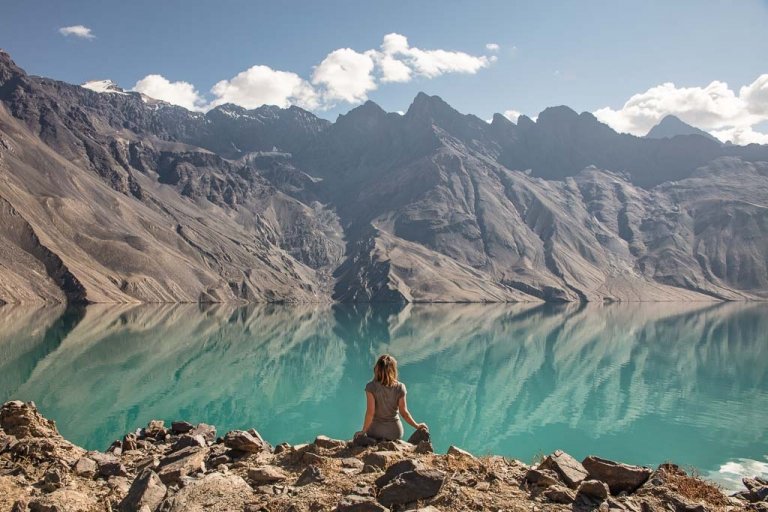
Yagnob Valley Trekking & Travel Guide
Updated July 2023, The Yagnob Valley Trekking & Travel Guide was originally written in October 2019
Over 2,500 years of living history, wild and twisting peaks, ancient language and traditions, and friendly inhabitants, the Yagnob Valley is wild, remote, and warm-hearted Tajikistan. In this guide you’ll learn most information you’ll need to set out on your own adventure into the valley and further afield.
Heading to Tajikistan? Start here: The Tajikistan Travel Guide

A Little History About The Yagnob Valley
The Yagnobi have a history that dates back to the time of ancient Sogdiana. The Sogdian Empire’s saga stretches back to the 6th century BC and encompassed the modern provinces of Samarkand and Bukhara in Uzbekistan, the Sughd region of Tajikistan and at times extended beyond these areas.
In 706 AD Divashtich was named the King of Panjakent, and by 720 during the Arab Conquests of Transoxiana Divashtich along with Karzanj and his army joined forces with the Sogdian ruler of Fergana, Alutar. Alutar would later betray Divashtich and Karzanj’s army by telling the Umayyads where both Divashtich and the army were stationed.
By 722 Al Harshi, the Umayyad general, would go on to massacre the Karzanj army in Khujand and continue onto the Upper Zeravshan Valley where Divashtich had fled and captured him. Against the wishes of the Umayyad governor of Iraq, Al Harshi executed Divashtich in Rabinjan (located in modern-day Uzbekistan) and sent his head to Iraq.
As a result of the Umayyads advancing into the Zeravshan Valley, some Sogdians (both those that were already living there and those that had joined Divashtich as he absconded Panjakent) fled south to the Yagnob Valley where they knew it would be safe to continue practicing their religious (Islam mixed with Zoroastrianism) and Sogdian traditions. Owing to the rugged terrain of the narrow valley the Sogdian descendants that would become the Yagnobi people enjoyed several centuries isolated and undisturbed residing here as Islam spread across Tajikistan and later the Soviet Union laid claim to the land.
The Yagnobis managed to live out here having little contact with others until the 1820s when expeditions began exploring the area. By the 1880s most of Tajikistan was under the control of the Russian Empire, but the Yagnobis were mostly left alone until later after the Tajik SSR under the Soviet Union was established.
The first wave of Yagnobis to leave the valley was in the 1930s during the Soviet Union’s Great Purge when some Yagnobi people were forced into exile. From the 1950s to the 1970s Yagnobis were forced to resettle in Zafarobad, the Fergana Valley, and in the plains in southwest Tajikistan, with the last Yagnobi families being forced out in late 1971.
During this time many people from mountainous areas of Tajikistan like the Pamirs and Yagnob were forced to labor in cotton plantations. Many Yagnobis died due to the extreme heat of the Fergana Valley and the scorching southwestern plains because they weren’t adapted to hot temperatures being shepherd from the mountains.
As the Soviet Union began to lose its grip in the 1980s some of the people that were forcibly moved began to return to their valley to rebuild their ruined villages and homes and return back to their way of life during the Soviet Union’s Perestroika.
The Yagnob Valley still remains sparsely populated, as many Yagnobis died and many more just did not return. Yagnobis can found scattered between the Yagnob Valley, Zafarobad, Dushanbe, and Takob. To this day a number of the villages of the valley remain completely abandoned and in ruins and others with only a couple of families residing in them.
Despite all the hardships and chaos, the Yagnobi people have dealt with over the years, the language is still very much alive.
There are a few thousand Yagnobi speakers that can be found around western Tajikistan. The language is directly descended from the language spoken throughout ancient Sogdiana and speakers can be found scattered in villages in the Yagnob Valley (though it is worth noting that not all villages in Yagnob Valley are Yagnobi speaking).
Yagnobi is most closely related to the Ossetian language spoken in South Ossetia. The Tajik government along with the Rudaki Institute of Languages & Literature Studies have been supportive of keeping the Yagnobi language alive, helping produce teaching and written materials, ensure that children in the area are taught Yagnobi in schools throughout the valley and encourage the study of Sogdian music and literature.

How To Get To Yagnob Valley
Getting to the Yagnob Valley is pretty simple. You can go by shared taxi, chartering your own driver and 4×4 from a taxi stand, prearranging a 4×4 and driver, or on an organized tour.
Shared Taxi Or Chartering A 4×4 & Driver
From Dushanbe: Allegedly a shared taxi *usually* leaves Dushanbe daily to Margib. you’ll need to head to the cement zavod taxi stand just north of the city. This is not how I did it, but if you happen to turn up at the taxi stand and find this car, hop on it.
In reality: Head to the cement zavod taxi stand (what I did) and find a shared taxi to Sarvoda. You should pay 50 TJS per seat roughly (update: expect to pay about 65 TJS per seat as of November 2021). Do agree to a price before departure or else risk the driver trying to shake you down for an obscene amount of Somoni on arrival.
From Sarvoda you’ll likely need to charter a 4WD to drive you the remainder of the way to Margib. Plan to pay about 300 TJS for the whole car. If you time it right in the afternoon and there are Yagnobi merchants headed home from the Sarvoda Bazaar you may score a seat in a shared car for 75 TJS or so.
From other cities in western Tajikistan: You can also reach the Yagnob Valley from Khujand, Istaravshan, and Panjakent. Grab a shared taxi departing for Sarvoda and then repeat the steps mentioned above to get from Sarvoda to Margib.
Chartering A 4×4 In Advance Or By Organized Tour
Prearranging a hired car: This is a much more expensive option, though you’re likely to get a decent car, maybe a tame driver (no promises) and have a much more hassle (or hustle) free experience. You can expect prices in the 0.80-0.90¢ per kilometer range for the 125 kilometer journey.
On an organized tour: Wanna visit the Yagnob Valley without any headaches (again, no promises)? You can arrange tours to the Yagnob Valley quite easily via several local tour operators.

Other Starting Points
It’s possible to begin your adventure into the Yagnob Valley from villages in the Zeravshan Valley or from Romit. From Zeravshan Valley, it is advisable to contact ZTDA or a local operator (such as Paramount Journey) to arrange transport, though you could very well head to a taxi stand in Ayni (or Dushanbe, Khujand, Sarvoda, or Panjakent) and try to negotiate a 4×4 to take you to your desired starting point (ZTDA may be able to give pointers on any possible shared cars that go from Ayni).
For Romit you’ll want to grab a shared taxi heading west from Dushanbe to Vahdat. Once to Vahdat, you’ll need to ask around for where cars depart for Romit and negotiate a price. ZTDA can likely help you arrange transport to reach Romit as well.

Important Info
- Margib is the largest village and the usual starting point for most heading out to explore Yagnob Valley.
- The road does continue beyond Margib, past Bidev, and ends inside the canyon just beyond the village of Tag i Chanor. From here you’ll need to continue further afield on foot (or bicycle).
- There are various routes you can take, some even connecting to neighboring Zaravshan and Romit Valleys.
- Not all villages in this area have Yagnobi speakers living in them. Villages with known speakers are Pskon, Showeta, Nomitkon, Bidev, Kashi, Tag i Chanor, Pul e Rowut, Sokan, Upper & Lower Gharmen, Padipast, Dehbaland, Qul, Marghtumayn, and Whaginzoy.
- Margib, Hishortob, and Kiriyonte are Tajik-speaking villages.
- Many villages listed along the Yagnob Valley are uninhabited and left in ruin. Uninhabited villages include Tagob, Qiansi, Dehkalon, Navobad, Witikhan, Nodmayn, Dahana, Simich, Pitip, Chukkat, Khisoki Darv, Dumzoy, Shakhsara, Alowmayn, Mushtif, Warsowut, Pushoytamen, and Farkow.
Take a hike: The 10 best treks in Tajikistan

Routes Through Yagnob Valley
Yagnob Valley
From Margib You can trek the entire length of the Yagnob Valley in about 4 days depending on your fitness level. The valley does continue beyond the ruined settlement of Qiansi by about 15 kilometers where you could opt to turn south, go over 3,664 meter Honi Pass (or a bit firth east to 3,242 meter Zanob Pass) and to reach Rufigar and continue the long journey toward Romit Nature Reserve and the village of Romit.
At about 5 kilometers beyond Qiansi, you can head north and over 4,020 meter Rost Pass to reach Ghuzn or Mehron in the Zeravshan Valley as well as other passes.

Yagnob & Zeravshan Valleys
As mentioned above you can connect Yagnob and Zeravshan Valleys via a number of passes. The easiest being via Rost Pass which can be accessed roughly 4 kilometers east of Qiansi by turning north. Once beyond Rost Pass you can continue onto the village of Ghuzn where at times it is possible to be picked up by 4×4 vehicle, or continue trekking to the village of Mehron in the Zeravshan Valley.
Another option is to continue 14 kilometers east beyond Qiansi to head north and cross the much higher 4,840 meter Tabaspin Pass. Once over the pass, you’ll continue along the Tabaspin River to eventually reach Langar village in Zeravshan Valley.
For those seeking another added challenge, at about 6 kilometers beyond Tabaspin Pass make a detour to the west and over 3,590 meter Kanirovich Pass and then follow the Rivit River north to Esizi Village. This route is covered in Jan Bakker & Christine Oriol’s Trekking in Tajikistan Guidebook (I highly recommend purchasing a copy).
At the village of Petif, you can turn northbound for 4,160 meter Surkhat Pass to later reach Surkhat Village and then eventually onto Vidkon Village. Between (a few kilometers west of) Hishortob and Bidev there are four passes (west to east) connecting Yagnob Valley and Zeravshan Valley- 3,920 meter Minora Pass, 3,945 meter Darg Pass, 3,975 meter Farkou Pass, and 3,935 meter Darkh Pass.

Yagnob & Romit Valleys
As mentioned before toward the end of the Yagnob Valley you can head south over either Honi or Zanob Pass to reach a village called Rufigar. From Rufigar you can continue south along the Sarda i Miyona River that will eventually lead you to the Romit Nature Reserve and on to the village of Romit. The Romit Valley and nature reserve are rarely visited and a great place to experience rural Tajik life and wild nature.

Day Hike Along Pindar River
From Margib take a path uphill toward the south that will talk you along the Pindar River. This is a place where many go to graze their animals for the day from Margib and can make for a nice day trip for those of you short on time, it is possible to head east over an unnamed 2,960 meter pass and back north to Margib for a change of scenery on your day trip.


Tagrich Pass Loop
Head south as mentioned above along the Pindar River but about 3 kilometers in, head east to eventually go up and over 3,330 meter Tagrich Pass. You’ll arc toward the north to meet the Mushtif River and follow it north to Varsaut.
At Varsaut head back west along the Margib-Bidev Road to Hishortob and eventually back to Margib. Optionally at Varsaut, you can head east toward Bidev and beyond.
Another longer option would be to continue east at Mushtif Valley and eventually reach Qul Village and then on to Sokan, Gharmin, and Pskon. Once to Pskon, you can follow the road back to Margib.


Where To Stay In The Yagnob Valley
There are homestays in Margib, Pskon, Nomitkon, Bidev, Gharmin, Dehbaland, and Sokan. In inhabited villages don’t be surprised if you are openly invited to stay with families (though you should give some money as income can be scarce to come by in the Yagnob Valley and the Somoni will go a long way here), though people here can be quite shy due to the isolation.
Unless you plan to visit villages with homestays it is recommended to bring a tent and enough provisions for your intended length of exploration.
There are three homestays in Margib, which is your best jumping-off point for adventures further into the valley, you can expect to pay $10 USD per person per night including breakfast, and $5 additionally for lunches and dinners. I can personally recommend staying at Veterok Homestay with the family of Subhuddin in Margib.
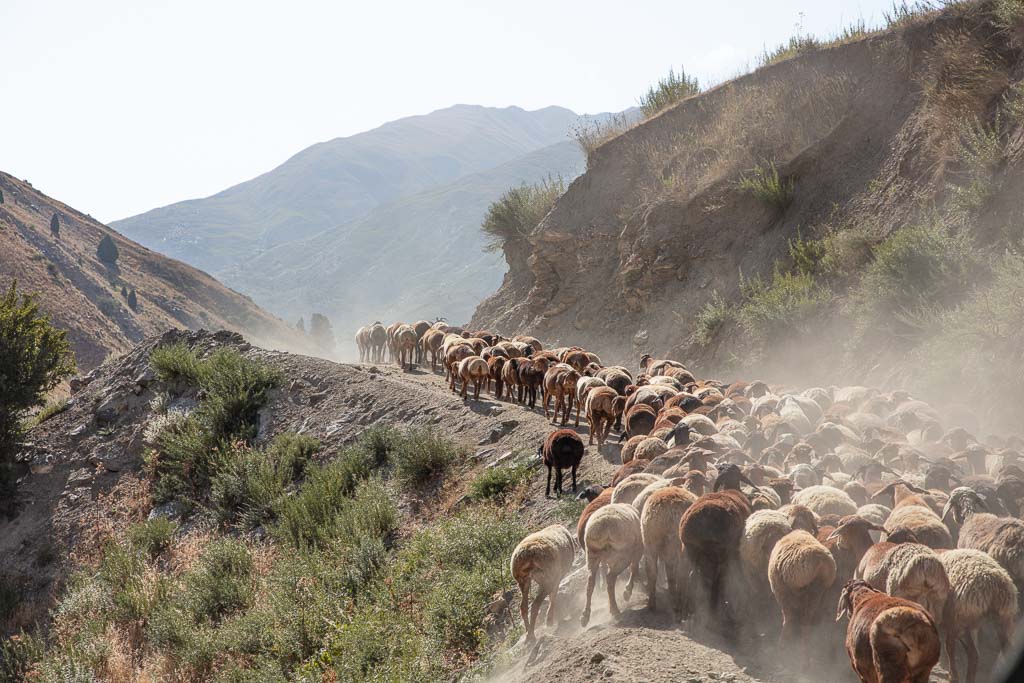

Tajik Operators That Offer Tours Of Yagnob Valley
I know not everyone is down to wander off into the unknown like I am and that’s okay. Paramount Journey has been leading trips in the Yagnob Valley for many years (they’ve actually helped provide snippets of information for this blog post as well) and are experienced in the Yagnob and Zeravshan regions.
Most Tajik tour operators can offer up customized trips into the Yagnob Valley as well, though not all know the Yagnob area very well, so do enquire before booking.
Continue Your Adventure In Tajikistan
The Fann Mountains Trekking Guide
The Ultimate Pamir Highway Travel Guide
Packing List
Trekking & Camping Gear
- Inreach Explorer+
- Backpack (I personally recommend the Ariel 65 for women)
- Hiking boots (My favorite are the La Sportiva Nucleo High GTX)
- Waterproof sandals
- Katadyn water purifier
- Fann Mountains Map
- Sleeping mat
- 3-season tent
- Hydration Pack
- Sleeping bag cold rated to -5ºC/20ºF
- Campstove and Cooking set
- Silicone squeeze tubes (for cooking with sauces, olive oil, etc.)
- Propane/butane canister (available for purchase at Greenhouse Hostel in Dushanbe)
- Trekking poles
- Headlamp
- Trekking in Tajikistan by Jan Bakker (Written by a friend and includes the Fann Mountains, Yagnob Valley, and Pamir)
Clothing
- Warm outer shell jacket x1
- Down jacket x1
- Fleece x1
- Merino wool long sleeve base layer top x2
- Merino wool sleeve base layer x2
- Trekking pants x1
- Merino wool leggings x2
- Trekking socks x2
- Warm socks x1
- Sports bra x2
- Mittons x1
- Warm hat x1
- Sunglasses x1
- Microfiber towel x1
Electronics
- Camera/lenses and necessary accessories
- Battery Bank
- Solar Panel
- Phone and charging cables
Maps
- Fann Mountains Map by EWP (can be ordered direct from EWP as well)
- Southern Tajikistan Map by Gecko Maps
Toiletries
- Sunscreen
- Biodegradable shampoo bar
- Biodegradable soap
- Toothbrush
- Biodegradable wipes
- Toilet Paper
- First Aid Kit
- Hand sanitizer
Guide Books
- Trekking in Tajikistan by Jan Bakker & Christine Oriol. You’ll find detailed descriptions of these hikes as well as those in the Pamirs in this book.
- Tajikistan and the High Pamirs by Robert Middleton & Hue Thomas. This is a huge book, but it has so much good info on Tajikistan from history, great-game stories, travel information, and more.
- Bradt Guide Tajikistan by Sophie Ibbotson & Max Lovell-Hoare. The most comprehensive guide to Tajikistan in print.
- Central Asia by Lonely Planet. Handy to have with you, although don’t necessarily treat it as a bible. Things rapidly change and the currency can fluctuate so it’s not always dead on. A new edition published in 2018 and I heavily question whether the writer in charge of the Tajikistan section had ever stepped foot in the country, you’ve been warned.
- The Central Asia Phrasebook by Lonely Planet I found this to be a handy item for Tajik, Russian and Kyrgyz phrases, not so much for the Wakhi phrase section.
Food
- Dehydrated meals such as Mountain House (you’ll need to stock up before leaving home)
- Trail mix
- Jerky
- Dried fruit and nuts (easily purchased at a bazaar)
- Peanut butter
- Spice packets
- Olive oil for cooking
- Hot sauce (bring from home to jazz up bland food)
- Instant mashed potatoes (so unhealthy, but I love them after a long trekking day)
- Fresh veggies, noodles, bread, rice, and more can be purchased at a bazaar prior to setting out for your trek)
Need Travel Insurance for Tajikistan?
Start shopping plans over at battleface, my go-to travel insurance choice, or over at World Nomads.





